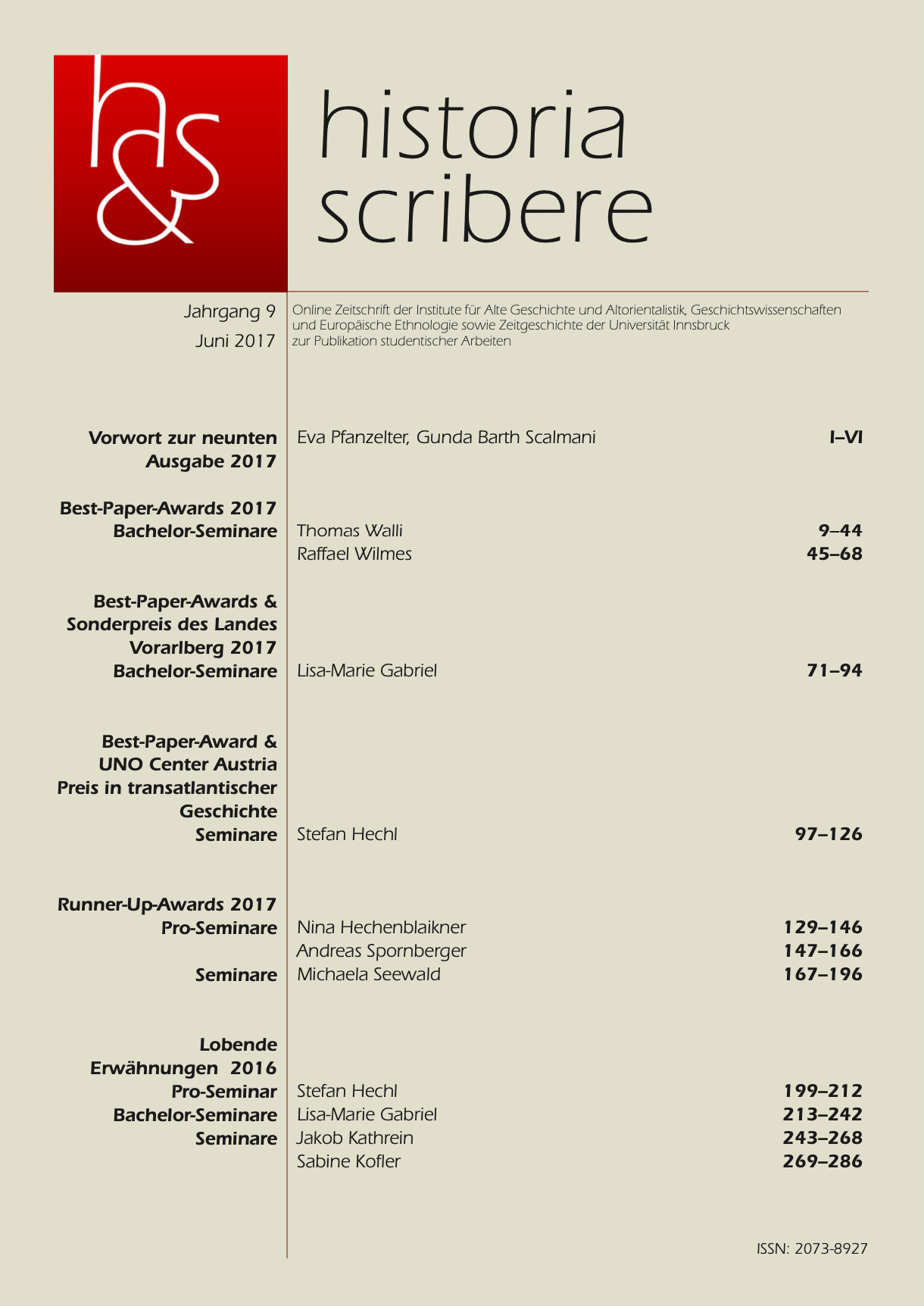Indigene und Cook. Der Tahitianer Omai (1751–1780) als Fallbeispiel für das Konzept des „Edlen Wilden“?
DOI:
https://doi.org/10.15203/historia.scribere.9.555Schlagwörter:
SE-ArbeitAbstract
During James Cook’s second voyage of discovery, a young Tahitian by the name of Omai (1751–1780) was taken aboard the Adventure, one of the two ships of this expedition. Omai travelled to England, where he was introduced into the British Upper Class and much admired as a living example of a noble and pure South Sea islander in tune with Mother Nature. Omai became accepted in the highest society circles, was painted by several great artists of the time and became part of the collective hype surrounding James Cook’s voyages of discovery and the new experiences with non-European cultures. This paper compares available scientific literature on this topic and aims to analyze the role of Omai as a historical figure and as the personification of the idealized European concept of the noble savage.Downloads
Veröffentlicht
09.06.2017
Ausgabe
Rubrik
Lobende Erwähnungen 2017
Lizenz
Die Einreicher_innen erklären sich mit Einreichen der Beiträge mit den Copyright-Bedingungen von historia.scribere, d. h. mit der Online-Publikation ihrer Arbeiten, einverstanden.Diese Beiträge werden im sog. Gold Open Access publiziert und sind unter der Creative Commons-Lizenz (CC BY-NC-SA 3.0 AT) lizenziert.


